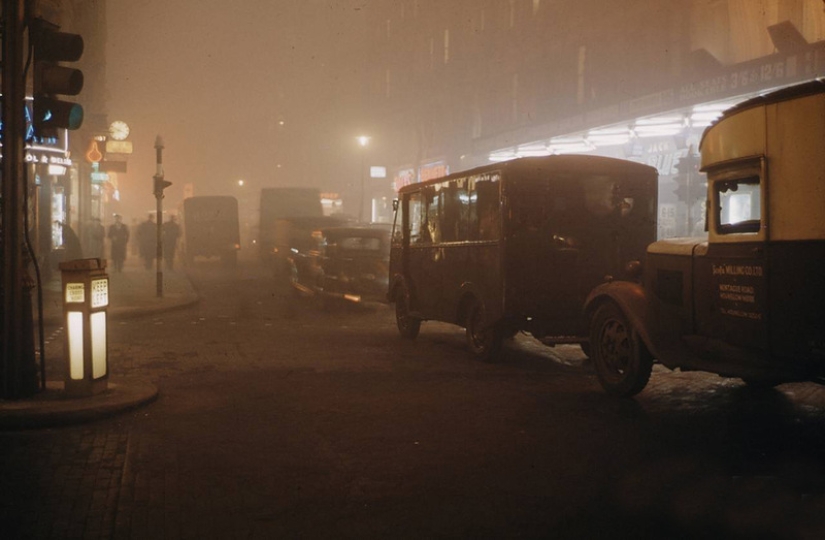10 photos of the Great Smog in London
On December 5, 1952, one of the most terrible environmental events in the history of England took place. "Great Smog" (Eng. Great Smog) tightly enveloped London for four days and dissipated only by December 9. What happened was a real disaster, as a result of which 12 thousand people died and more than 100 thousand were injured, which is believed to have served as the starting point of the modern environmental (ecological) movement.


The shock caused by this cruel lesson forced people to change their attitude to air pollution. The disaster has clearly demonstrated to the whole world that this problem poses an immediate threat to people's lives. New environmental standards have been adopted aimed at limiting the use of dirty fuels in industry and banning soot-containing exhaust gases. Among the measures taken are the enactment of the Clean Air Act (as amended in 1956 and 1968) and a similar Law of the City of London (1954).

In early December 1952, a cold fog descended on London. Due to the extremely low temperature, the townspeople began to use coal for heating in larger quantities than usual. At about the same time, the process of replacing urban electric transport (trams) was completed for buses with a diesel engine.

Trapped by a heavier layer of cold air, gorenje products in the air in a matter of days reached an extreme concentration.

The fog was so thick that it impeded the movement of cars. Concerts were canceled, the demonstration of films was stopped, because smog easily penetrated into the premises. The audience sometimes simply did not see the stage or the screen because of the dense veil. By Friday evening, the fog had thickened so much that the visibility limit was reduced to five meters. Some citizens, having left the house, could not find their way back; confused by the impenetrable smog, they could only walk by holding on to the walls of the nearest houses.

Many people wore special masks made of gauze, and some covered their faces with ordinary scarves or scarves, but neither helped — there was nothing to breathe.

At first, the reaction of the townspeople was calm, because fogs are not uncommon in London. In the following weeks, however, statistics collected by the city's medical services revealed the deadly nature of the disaster — the number of deaths among infants, the elderly and those suffering from respiratory diseases reached four thousand people. About eight thousand more people died in the following weeks and months.

The unpleasant impenetrable fog has been one of the distinctive features of London for centuries. Dickens wrote about the fogs of the English capital, who called it "part of the personality of London", Conan Doyle wrote in the stories about Sherlock Holmes and Robert Stevenson in "The Strange Story of Dr. Jekyll and Mr. Hyde". Fog is as much an asset of England as the architecture of old London or the royal family.

But the word "smog" (a poisonous mixture of smoke and exhaust gases with fog) appeared only forty-five years before the events described and was put into circulation in 1905 by Dr. Henry de Vaux.

On Saturday, December 6, 1952, at the Sadler's Wells Theater, La Traviata was interrupted in the middle due to the fact that the audience suddenly started coughing. A thick, acrid fog slowly filled the hall, and it became almost impossible to see the scene from the gallery.

In those days of the "great smog", London hospitals were quickly filled with victims with respiratory diseases, and mortality in the city began to increase. At first, these facts were not made public, but a few days later it turned out that the undertakers had run out of coffins, and the flower sellers had funeral wreaths. Ambulances did not have time to get to the patients — the whole city was stuck in one big traffic jam, unable to move. People were dying of suffocation.
Recent articles

Most of us think that the color of the eggshell does not play any role and it is possible not to pay attention. But it's not and ...

The more we rely on technology, the more potential power hackers gain over us. It doesn't matter if their goal is to help or cause ...

Creating a good portrait is one of the most difficult tasks for any photographer. In order to make a really natural and memorable ...